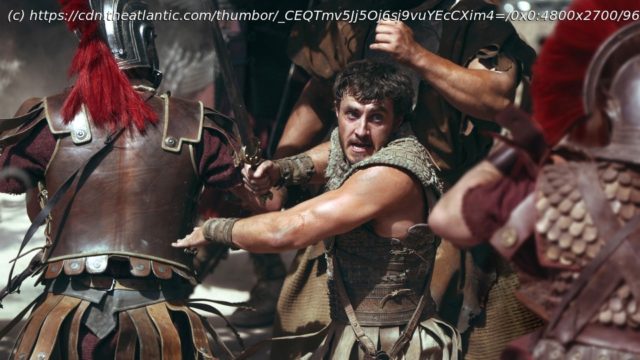Ridley Scott’s ancient-Roman epic manages to find some beauty amid the savagery.
Long before “thinking about the Roman empire” became shorthand for having a hyper-fixation, Ridley Scott turned the actual Roman empire into a mainstream obsession. In 2000, the director’s sword-and-sandal blockbuster Gladiator muscled its way into becoming that year’s second-highest-grossing film, before winning the Academy Award for Best Picture and cementing its status as—I’m just guessing here—your dad’s favorite movie of all time. “Are you not entertained?!” Russell Crowe’s Maximus goaded the crowd in a memorably rousing scene. We really were: Here was an almost absurdly simple tale of revenge that Scott, via visceral fight scenes (and real tigers), turned into a maximalist epic.
For Gladiator II, now in theaters, Scott has somehow taken it a step further. The sequel has twice as many heroes to root for and twice as many emperors to root against, plus a wild card in the form of Denzel Washington’s conniving arms dealer, Macrinus. In lieu of tigers, battles in the arena now involve a menagerie of baboons, sharks, and a rhino. Even the opening credits have been designed to excite the audience: Key scenes from the previous film are animated in a painterly sequence, which lands on a title card that stylizes the sequel’s name as, gloriously, GLADIIATOR. It’s so grandiose, the audience at my screening started applauding before a single fight had begun.
Set 16 years after the events of Gladiator, the sequel follows Lucius (Paul Mescal), the son of Maximus and Lucilla (Connie Nielsen, reprising her role). Lucilla secretly sent the young Lucius away to the kingdom of Numidia for his protection after Maximus’s death. In the years since, a lot has happened, which we learn through overly ornate flashbacks and exposition. Lucius has come to resent his homeland and his mother, given their time apart.






